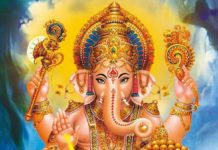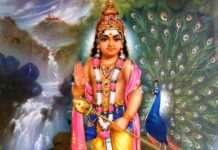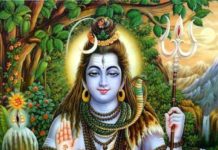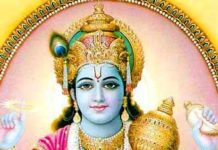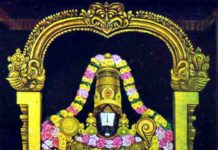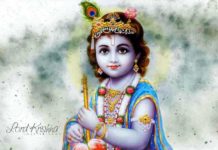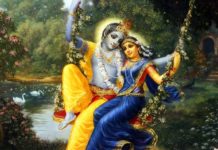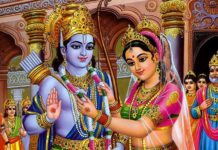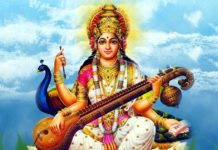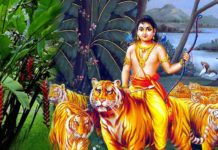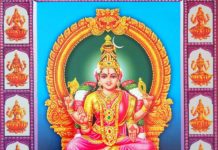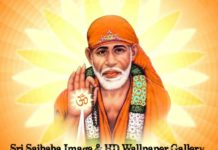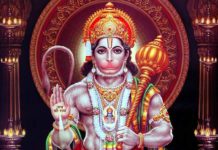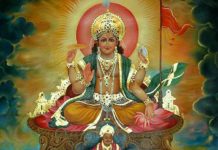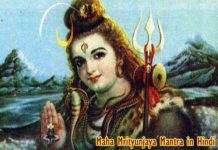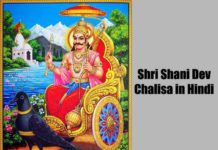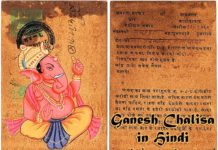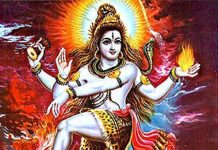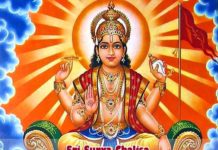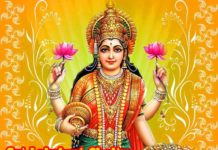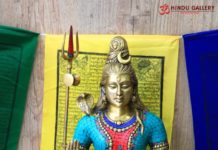Brahmapureeswarar Temple is the Shiv Temple situated at Thiruppatur near Thiruchi, Tamil Nadu. The place is also called as Thiruppadaiyur, Thillai Moovaayiram and Thiruppidavur.
Four temples
At Thiruppattur, there is a cluster of four temples which are to be visited on the same day at a stretch. They are Sri Ayyanar Temple, Sri Varada Raja Perumal Temple, Sri Kasi Viswanathar Temple and Sri Brahma Pureeswarar Temple.
Sri Ayyanar Temple
Sri Ayyanar Temple is the first temple to be visited in the series of the temples. This temple is dedicated to Bhagwan Sri Ayyappa. His Vahan is elephant. This is also called as Sri Sastha Temple.

This temple is believed to be in existence since Chola era. Sri Sastha was being worshipped as Sri Maa Saathanar by the Chola Kings. There was a practice of keeping the weapons in the sanctum of Sri Sastha before proceeding to war. After winning the war, people used to make Pongal in the vicinity of the temple and offer Neivedyam to God as a sign of thanks giving.
The specialty of Sri Sastha of this temple is that He is holding the palmscripts of Thirukailaya Gnana Ula composed by Sri Cheramaan Nayanar.
Sri Cheramaan Nayanar was the ardent friend of Sri Sundarar. Sri Cheramaan had composed hymns on Bhagwan Shiva showering his love and affection towards the Bhagwan.
Sri Sundarar had told Sri Cheramaan that the composition could be inaugurated in the presence of Bhagwan Shiv at Sri Kailash itself. Both of them went to Sri Kailash. They were given a warm welcome by the Shiv Ganas. They had entered Sri Kailash and prostrated before the holy feet of Bhagwan Shiva.

Sri Parvathi Devi had suggested that the first recital of Thirukailaya Gnana Ula be done at Thiruppattur itself. This is an additional blessing.
Bhagwan Shiva had ordained one of the Shiv Gana to go to Thiruppattur and arrange for the first recital programme. The 18 pillar stone mandapam in which the recital was done still exists in this temple.
Thirukkayilaaya Gnana Ula festival is celebrated with ardent devotion every year during Swathi Star-day of Aadi month (Jyeshta). On that day, Sri Ayyanar Deity with palm scripts is taken on procession throughout the place. Sri Sundarar and Sri Cheraman Vigrahas also join the procession.
It is considered auspicious to worship Sri Ayyanar by offering Vasthram and Tamarind rice and curd rice as Neivedyam.
Sri Varada Raja Perumal Temple
This is the second temple to be visited. This temple is ascribed to Sri Varada Raja Perumal, one of the incarnations of Sri Maha Vishnu. This temple is to the western side of Sri Brahma Pureeswarar Temple. During Pallava Era, the temple was known as Sri Purshothama Perumal Temple.

It is believed that this temple was built in 8th Century A.D by the King Nandi Varma Pallava. Nayakar Kings had also contributed for the development of this temple. During Nayakar Era, the temple had come to be known as Sri Varada Raja Perumal.
In the main Sanctum, Sri Varada Raja Swamy is in the standing position and both Sri Devi and Sri Bhu Devi are with Him either side.
In the Maha Mandapam before the main Sanctum, we can sight Sri Krishna playing flute as well as Sri Kalinga Nardhana Krishna. It is considered auspicious to do special Puja to Sri Krishna here on Rohini Star-day. For those born on Rohini Star-day, it is considered virtuous to worship Sri Krishna here atleast once.
It is believed that Sri Varada Raja Perumal here had alleviated the Brahma-hatya dosh of Sri Shiv. All festivals of Sri Vishnu are grandly celebrated here.
During Phalguna month (Panguni), Brahmotsavam with daily processions, temple car festival and Thirukalyanam is celebrated for ten days.
Sri Kasi Viswanathar Temple
This temple is at a distance of about a kilometer from Sri Brahma Pureeswarar Temple. As per belief, this temple has to be visited before having the darshan of Sri Brahma Pureeswarar.

As per the legend, this temple is considered to be as sacred as Sri Viswanath Mandir in Kasi. The temple houses the Samadhi of Sage Vyagra Paadha. Sage Vyagra Paadha had human body and tiger legs. He and Sage Pathanjali were great friends and ardent Shiv-Bhakts.
Sage Vyagra Paadha had consecrated the Shiv-Ling here. He used to do abhishek and do archana with bilva leaves daily. He used to draw water from the pond which was to the north of the temple.
Suddenly, the pond had dried up. He could not fathom as to how to perform abhishek and puja. At that time, He saw Airavatha, the celestial elephant carrying Ganga Jal to do abhishek for the Thiruvanaikka Jambukeshwar. Airavatha was actually flying.
The Sage stopped Airavatha and requested for some water to do abhishek. But the elephant refused citing lack of time and flew away. Crestfallen, the Sage had kicked the land near His feet crying that if His devotion was true, Sri Shiv should arrange for water.
From the place kicked by the Sage, water started sprouting. He was ecstatic. He started doing Puja to Sri Shiv with this water. This tank water is still there and is considered as sacred as Ganga Jal.

Before entering the temple, it is customary to wash feet in this tank and sprinkle some water on the head.
Worshipping Sri Viswanathar and Sri Visalakshmi Ambal in this shrine by offering them Vasthras is said to alleviate the ill effects of Pitru Dosh. Praying at the Samadhi of Sage Vyagra Paadha is said to get us the blessings of all the departed souls in the family.
As per belief, it is considered auspicious to get the blessings of the family elders before seeking the boon of enhanced destiny from Sri Brahma.
Sri Brahma Pureeswarar Temple
As per the legend, once Sri Brahma had five heads similar to Bhagwan Shiv. This similarity had gone into the heads of Sri Brahma. He thought that He was equal to Shiv. This thought made Him very proud.
Bhagwan Shiv thought that it was high time Brahma was taught a lesson. He plucked the fifth head of Brahma and usurped the creation job from Him.
Brahma had realized His mistake and ardently prayed to Bhagwan Shiv for forgiveness. For this purpose, He had come to Thiruppattur and established a Shiv Ling here for doing Puja.
He had dug up a well for drawing water for abhishekam. The well is known as Brahma Theertham. The well is designed in such a way that the rain water falling on the roof and inside the temple is collected without getting wasted.
He also had established twelve Shiv Lings depicting twelve Shiv Mandirs. Sri Shiv had granted Him pardon. While doing so, He had ordained that Sri Brahma should improve the destiny of those who visit the temple and worship Sri Brahma.

Hence, it is believed that praying to Sri Brahma in this temple shall bring in good turn in life.
It is believed that this temple was built in 14th Century A.D. The main Rajagopuram has five tiers. In this temple number seven is significant. To have the darshan of Bhagwan Shiv we have to cross seven stages. It is considered auspicious for devotees having either seven in their birth day or seven as their lucky number to worship Sri Shiv at this temple. It is also considered good to worship Sri Shiv with seven lotuses.

The main Deity is Bhagwan Shiv known by the name Sri Brahmapureeswarar. His consort Sri Parvathi Devi is known by the name Sri Brahma Sampath Gowri.
Every year, on 15th, 16th and 17th days of Panguni month, Sun-Rays fall on Sri Brahmapureeswarar from 6.15 A.M to 6.45 A.M. It is considered that Bhagwan Surya Himself is worshipping Bhagwan Shiv on these days and times. It is auspicious to worship Bhagwan Shiv and Sri Brahma during such time. It is believed that such worship would alleviate the ill effects of planetary alignments.
Soon after having the darshan of Sri Brahmapureeswarar, we come to the Shrine of Sri Brahma. Here, Sri Brahma sits on a lotus. He has four heads. Each of the four heads has a crown. He has four hands. He has kept His lower two hands in His lap. He has japa mala in His right hand and kamandalam in His left hand.
It is believed that doing abhishekam to Sri Brahma with turmeric on Mondays, Thursdays and Sundays provide virtuous benefits.
The devotees tie up a coin in turmeric-soaked cloth at home. They sincerely pray to Sri Brahma at this Shrine for the fulfillment of their wishes. After their wishes are achieved, they visit this Sannidhi and do abhishekam to Sri Brahma with turmeric and offer yellow clothes as Vasthram.
It is believed that worshipping Sri Brahma with turmeric abhishekam on the devotee’s star birthday shall bring in immense benefits. After abhishekam, the devotees offer yellow clothes to Sri Brahma as Vasthram and Tamarind rice as Neivedyam and distribute to others.
It is considered auspicious to light 36 lamps in Sri Brahma’s Sannidhi. The number 36 denotes 27 stars and 9 planets. It is believed that lighting of lamps shall alleviate the ill effects of planetary alignments in the horoscope. The devotees also keep the note book containing the horoscope of all the family members at the holy feet of Sri Brahma to seek His blessings.
Praying to Sri Brahma in His Sannidhi is believed to result in the following benefits.
-Good turn in life
-Improved education to the kids
-Blessing of progeny
-Getting good jobs
-Improved health condition
-Longevity
While we are at the sanctum of Sri Brahma, we are also blessed with the darshan of Sri Dakshina Murthy.
After having the darshan and blessings of Sri Brahma, we come to the sanctum which houses the Samadhi of Sage Pathanjali, the doyen of Yoga. Sage Pathanjali was the incarnation of Sri Adi Sesha, the bed of Bhagwan Vishnu.
Before entering the Sanctum of Sri Pathanjali, we are blessed with the darshan of Sri Saptha Mata Devis. Worshipping Sri Saptha Mata Devis blesses the devotees with elimination of enemies, alleviation of ill will, success in work, protection to home, brightness in life and home and prosperity.
It is considered virtuous and auspicious to sit silently near the sanctum of Sri Pathanjali for getting peace of mind and tranquility.
Having had the darshan of Sri Pathanjali, we come to the Shrine of Sri Subramanya. Sri Subramanya is with Sri Devyani and Sri Valli. His vahan peacock has turned its neck looking at Sri Muruga.
It is believed that Sri Muruga had stayed in this place along with His army. Hence the place is also named as Thiruppadaiyur, the place of celestial army. Sri Subramanya also assumes the position of Guru in this Kshetra.
Normally in Sri Muruga Shrines, the peacock is always placed under the right hand of the Deity. This is called as Deva Mayura. In this Shrine, the peacock is placed under the left hand of Sri Muruga. This type of depiction is called as Asura Mayura. It is considered auspicious to worship this Sri Subramanya to alleviate the troubles of enmity.
During Tuesdays, Krithika Star days and Sashti days, vasthram is offered to Sri Muruga and His consorts and Sweet Pongal is offered as Neivedyam. It is believed that worshipping Sri Subramanya will remove the ill effects of pending legal tangles. It is also believed that Sri Muruga blesses and bestows success in all endeavours.
After having darshan of Sri Subramanya, we come to the Sanctum of Sri Parvathi Devi. Here, Sri Parvathi Devi is known as Sri Brahma Sampath Gowri. As per the legend, it was Sri Gowri who had recommended to Bhagwan Shiv to forgive Sri Brahma.
During Sundays, Mondays, Tuesdays and Fridays, devotees offer vasthram to Sri Ambal and provide the Neivedyam of Sweet Pongal / Paal Payasam. They ardently pray to Sri Gowri for alleviation of their troubles and removal of hindrances in their lives.
After coming out of Sri Ambal’s sanctum, we can see a garden like structure which houses the twelve Shiv Shrines established by Sri Brahma. They are Sri Pathala Eshwarar, Sri Suddha Rathneshwarar, Sri Thayumanavar, Sri Kailasa Nathar, Sri Thiruvanaikka Jambukeshwarar, Sri Lalgudi Saptha Risheeswarar, Sri Arunachaleshwarar, Sri Pazha Malai Nathar, Sri Brahma Pureeswarar, Sri Kalathi Nathar, Sri Ekambareshwarar and Sri Manduka Nathar.
In this cluster of twelve Shrines, Sri Kailasa Nathar Shrine appears as a separate temple. It appears to be constructed as per Pallava architecture. The Shiv Ling has no base stone and it has sixteen vertical parallel lines. It is known as Chandra Kala Lingam. It is believed that the central Shiv Ling in Chidambaram Nava Linga shrine and the main Deity of Kanchipuram Sri Kailasa Nathar are similar to the Shiv Ling at Sri Kailasa Nathar shrine at Thiruppattur.
When we complete the perambulation, we come to the sanctum of Sri Navagraha. Near Navagraha Sannidhi, we are blessed with the darshan of Sri Narasimha Swamy at the pillar near Sri Nandikeshwara.
During Pradosham time, we are blessed to have the darshan of Sri Narasimha when abhishekam is performed on Sri Nandikeshwara.
Sri Kala Bhairava is in the north-east corner facing west. His right ear’s shape and the ear ornament are different from the other temples. He has four hands holding damaru, pash and angush. He holds Amrutha Kalash in His left hand. The serpent belt in His hip also touches the Kalash.
During Krishna Paksha Ashtami days, it is considered auspicious to worship Sri Kala Bhairava for alleviation of debts, success in legal tangles and for prosperity. On the Rahu Kalam of that day, devotees put 27 pepper corns in a piece of cloth and tie it. They use the tied cloth as wicker and light lamp with sesame oil.
It is considered auspicious to offer red flower garlands to Sri Bhairav. Offering vada mala, curd rice, samba rice and groundnut candy as Neivedyam is considered auspicious.
Sri Gajalakshmi is just opposite Sri Kala Bhairav. This is considered very auspicious.
To the north side of the temple lies Bahula Theertham, the temple tank. It has steps surrounding it. The very sight of the tank calms the mind.
The place is abundant with bilva and magizha trees. Magizha tree is the sthala Vrukasham of this temple.

As per scriptures, worshipping Bhagwan Shiv in this temple is equal to having direct darshan of Sri Bhagwan at Mount Kailash itself.
Temple festivals
The festivals are celebrated as per Tamil Calendar.
Chaithirai (Chaithra)
The first day of the Chithirai month is the first day of the New Year. On that day, Special Pujas are conducted at the temple to all the Deities. Reading of the Panhangam (Almanac) for the New Year is the sacred ritual conducted on the day.
Vaikasi (Vaosakka)
On the Visakha Star-day of this month, Special Abhishekam and Puja are done for Sri Subramanya Swamy in the temple.
Aani (Jyeshta)
On the Uthra Star-day of this month, special abhishekam and puja are conducted to Sri Nataraja Swamy at this temple.
Aadi (Aashada)
Aadi month is considered proper for sowing the seeds in the agricultural fields. On Pooram Star-day, the soaked whole green moong Dal is kept in the hands of Sri Ambal on this day and distributed as Prasadam to the farmers. The farmers then sow the soaked seeds prasadam on lands. It is believed that such procedure yields good abundant crops.
On Swathi Star-day, Thirukayilaya Gnana Ula Arangaetram festival is celebrated in a grand manner. On the same day, Guru Puja is done for Sri Sundarar and Sri Cheraman Nayanaar. At the evening processions and special puja are done.
On all Fridays of this month, Special Puja is done to Sri Ambal for seeking grooms for the unmarried women and for longevity of husbands of married women.
Avani (Sravana)
On Moola Star-day, special puja is done to Sri Bhagwan Shiv.
Purattasi (Bhadra Pada)
Navarathri festival is celebrated grandly. Sri Ambal is decked up with special alankaram every day during Navarathri.
Aipasi (Ashwin)
On Pournami day, Bhagwan Shiv is worshipped with Annabhishekam.
Karthika
Every Monday of this month, special puja is done to Sri Eshwar. Karthikai Deepam festival is celebrated grandly.
Margazhi (Margashira)
Arudra Darshan festival is celebrated grandly. Sri Nataraja Swamy is sincerely worshipped.
Thai (Dhanur)
Sankranthi, Thai Poosam and related festivals are celebrated.
Masi (Paush)
Maha Shivratri is celebrated with ardent devotion.
Panguni (Phalguna)
Annual Brahmotsavam with Thiru Kalyanam is observed for ten days. During 15th, 16th and 17th day of this month, rising sun rays fall on Sri Bhagwan Shiv. Devotees throng the temple to have this divine darshan.
Temple timing
The temple is open from 07.00 A.M to 12.00 Noon and from 04.00 P.M to 08.00 P.M. During Thursdays, the temple is open from 06.00 A.M to 01.00 P.M in the morning.
Abhishekam to Sri Brahma is done at 08.00 A.M daily except on Thursdays when it is done at 06.00 A.M.
Thirupattur, also called as Thiruppatur is the place in which the holy Sages including Vyagrapada and Patanjali did their penance. Sri Brahma had regained His glory and fame in this place. This place is considered as equally sacred as Sri Kailash.
It is sincerely believed that even dull students become bright after worshipping in the four temples. Conducting of Yagnopaveetham (thread ceremony) at this place is considered auspicious. It is also considered virtuous to conduct Sashti abhdha poorthi (60th birthday) and Sathabhishekam (80th birthday) at this place.
During Guru Peyarchi days, it is considered auspicious to do special Puja to Sri Brahma and Sri Shiv.
How to reach
Thiruppattur is 30 KM away from Thiruchi. At Thiruchi-Chennai Highway, the temple is between Samayapuram and Perambalur. The place is 5 KM from the Village Siruganur.





